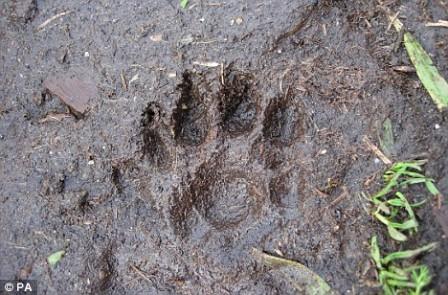Otter Tracking
On Monday I went out on the reserve in search of signs of otter activity along the river bank. Otters are extremely elusive creatures and although primarily nocturnal, can occasionally be seen during the day on the reserve. However, they do leave evidence of their activities along the river’s edge and it is always worth keeping an eye out for these signs. Otter droppings (or spraint) can be found wherever the otters have been hunting and are used to mark territory often left on higher points so as not be washed away. The droppings can also give an idea of the otters’ diet in a particular area, as this can vary greatly between different habitats. For example, in freshwater otters may feed on fish or large insects, whereas in coastal areas they may consume more crustaceans and shelled molluscs.

Otter tracks are sometimes seen at the Falls of Clyde on small, sandy areas beside the river. Unlike dogs and foxes which have four toes, otters have a distinctive five-toed footprint which is easily identifiable, being much smaller than and not as broad as those of badgers. Along with these footprints there are likely to be swishing marks in the mud or sand from where their strong rudder-like tail has been trailing behind them. Otters will swim downstream using the flow of the river, but will save energy by running back upstream along the river’s edge instead of fighting the current. They also cut corners wherever possible in order to take the shortest route, often creating a permanent path through the vegetation. It is also worth looking out for otter holts along the river bank, which can be located in the root systems of large trees, or in a strong stretch of banking. These are usually very well hidden and may not be visible in summer due to the vegetation cover. In the past there have been a few artificial holts built to provide safe underground accommodation for otters on the Clyde.
Bye for now!
Alex Kekewich
Help protect Scotland’s wildlife
Our work to save Scotland’s wildlife is made possible thanks to the generosity of our members and supporters.
Join today from just £3 a month to help protect the species you love.
Preface
On Monday I went out on the reserve in search of signs of otter activity along the river bank. Otters are extremely elusive creatures and although primarily nocturnal, can occasionally …
